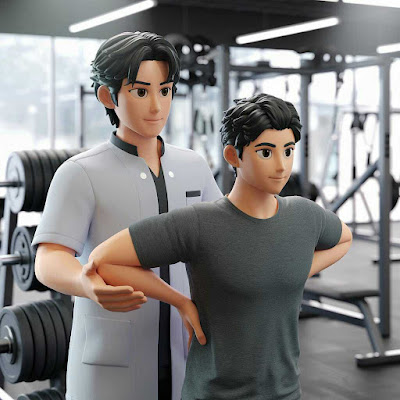# Understanding Spine Problems: Causes, Symptoms, and Solutions
## Introduction
The spine is one of the most vital structures in the human body, providing support, flexibility, and protection for the spinal cord. However, spine problems are common and can affect people of all ages. This blog post aims to explore the various types of spine issues, their causes, symptoms, and potential solutions.
## What Are Spine Problems?
Spine problems refer to any condition that affects the spinal column and its surrounding structures. These can range from minor issues, like muscle strains, to severe conditions, such as herniated discs or spinal stenosis. Understanding these problems is crucial for effective treatment and prevention.
### Common Types of Spine Problems
1. **Herniated Discs**
- A herniated disc occurs when the soft inner gel of the disc leaks out through a tear in the tougher exterior. This can lead to nerve compression, causing pain, numbness, or weakness in the limbs.
2. **Degenerative Disc Disease**
- As we age, the discs in our spine can wear down, leading to degenerative disc disease. This condition can cause chronic pain and limit mobility.
3. **Spinal Stenosis**
- Spinal stenosis is the narrowing of the spinal canal, which can compress the spinal cord and nerves. Symptoms may include pain, numbness, or weakness in the legs.
4. **Scoliosis**
- Scoliosis is a lateral curvature of the spine that can occur during growth spurts. While mild cases may not require treatment, more severe cases can lead to discomfort and complications.
5. **Sciatica**
- Sciatica refers to pain that radiates along the path of the sciatic nerve, which runs from the lower back down to the legs. It is often caused by a herniated disc or spinal stenosis.
## Causes of Spine Problems
Spine problems can arise from various factors, including:
- **Aging**: As we age, the spine undergoes natural wear and tear.
- **Injury**: Accidents, falls, or sports injuries can lead to immediate spine issues.
- **Genetics**: Some spine conditions, like scoliosis, can be hereditary.
- **Lifestyle Factors**: Poor posture, obesity, and lack of exercise can contribute to spine problems.
- **Occupational Hazards**: Jobs that require heavy lifting or prolonged sitting can strain the spine.
## Symptoms of Spine Problems
Symptoms can vary widely depending on the specific spine issue but may include:
- **Chronic Pain**: Persistent pain in the back or neck.
- **Numbness or Tingling**: Sensations in the arms or legs due to nerve compression.
- **Weakness**: Difficulty in moving limbs or performing daily tasks.
- **Stiffness**: Reduced flexibility in the back or neck.
- **Changes in Posture**: Noticeable changes in how one stands or walks.
## Diagnosis of Spine Problems
If you suspect you have a spine problem, seeking medical advice is essential. A healthcare provider will typically perform the following:
1. **Medical History**: Discussing symptoms and any previous injuries.
2. **Physical Examination**: Assessing posture, flexibility, and strength.
3. **Imaging Tests**: X-rays, MRI, or CT scans may be ordered to visualize the spine's structure.
## Treatment Options
### Conservative Treatments
1. **Physical Therapy**: Customized exercises can strengthen back muscles and improve flexibility.
2. **Medications**: Over-the-counter pain relievers or prescribed medications can help manage pain and inflammation.
3. **Lifestyle Changes**: Weight loss, improved posture, and regular exercise can alleviate symptoms.
### Surgical Treatments
In severe cases, surgical intervention may be necessary. Common procedures include:
- **Discectomy**: Removal of a herniated disc.
- **Laminectomy**: Removal of part of the vertebra to relieve pressure on the spinal cord.
- **Spinal Fusion**: Joining two or more vertebrae to stabilize the spine.
## Prevention Strategies
Preventing spine problems is often more effective than treating them. Here are some strategies to consider:
- **Maintain Good Posture**: Whether sitting or standing, keeping a straight back can reduce strain on the spine.
- **Exercise Regularly**: Strengthening core muscles can provide better support for the spine.
- **Use Ergonomic Furniture**: Invest in chairs and desks that promote good posture.
- **Avoid Heavy Lifting**: Use proper techniques or equipment to lift heavy objects.
- **Stay Hydrated**: Proper hydration can help maintain the health of spinal discs.
## Conclusion
Spine problems can significantly impact your quality of life, but understanding their causes, symptoms, and treatment options can empower you to take control of your spinal health. Whether through conservative measures or surgical interventions, there are various ways to










0 Comments